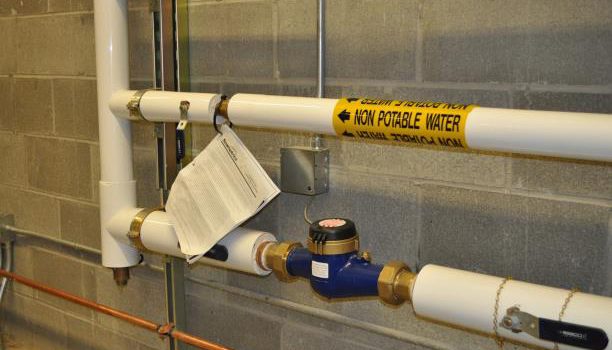High performance buildings and hospitals usually don’t belong in the same category but there is one hospital that has proven that with a commitment from the owner, design and construction teams, high performance and hospitals can coexist. That hospital is located in the Pacific Northwest city of Issaquah, WA. When facilities personnel were in the planning stages for the new hospital the primary goal was to build and operate a high performing hospital. But that doesn’t happen by chance. Measuring and benchmarking utility water usage was important, but another somewhat forgotten water usage was also measured. That water usage is the non- potable domestic water for closed loop systems such as heating water and chilled water.
Hospitals, like many other building owners and operators, have felt the pain reviewing a monthly water bill only to see a spike in usage. Then there is a cascade effect of managers, supervisors and engineers searching through the building to find the culprit. In large facilities such as a hospital it could take days and sometimes months to find where the water is going. Installing an inexpensive but high quality water meter with a pulse output (gal/contact closure) connected to a building automation system can save time, wasted water consumption and of course money. The operation is very simple — the water meter with pulse output will register water consumption. On a closed loop system, assuming there are no leaks, that consumption would be 0. But in the case of a leak that consumption would start to climb, sometimes slowly but often drastically. A simple program in the Building Automation System (BAS) to alarm the facility operators that a closed loop meter is reading high water consumption in a short time period can drastically improve facility operations and help conserve a precious resource.
The featured hospital has Seametrics MJ Series mechanical meters installed on all closed loop systems (heating and chilled water) as well as sub-metering irrigation make-up water for cooling towers. If a meter reads 100-500 gallons in a ten minute period an alarm is registered and facilities personnel know exactly where to go to begin troubleshooting the alarm.
“There are a lot of reasons for installing water meters for sub-metering a facility’s water usage because if it isn’t measured then what good is it? You cannot manage what you do not measure” says the Building Systems Engineer in charge of energy management at the hospital. Other uses for water meters in such a facility would include:
1. Installation on make-up water to closed loop heat exchangers. This can potentially save money not only on water usage but energy (natural gas, or district steam) usage as well. With a small leak in the heat exchanger the heated fluid will decrease in energy content and the energy supply to the heat exchanger will also increase which results in increased utility costs and carbon emissions. Again, facilities personnel would save valuable time by knowing exactly where the problem is.
2. Installation on make-up water to closed loop chilled water systems. Sometimes in the freezing winter, a coil in an air handling system will freeze and break. The water has to go somewhere so as the break happens the make-up meter will see an increase and facilities personnel will know that there is a problem and hopefully will be able to isolate it before water damage from the leak occurs.
Hats off to the team that planned ahead to use Seametrics flow meters to save time, save money, and conserve resources!

